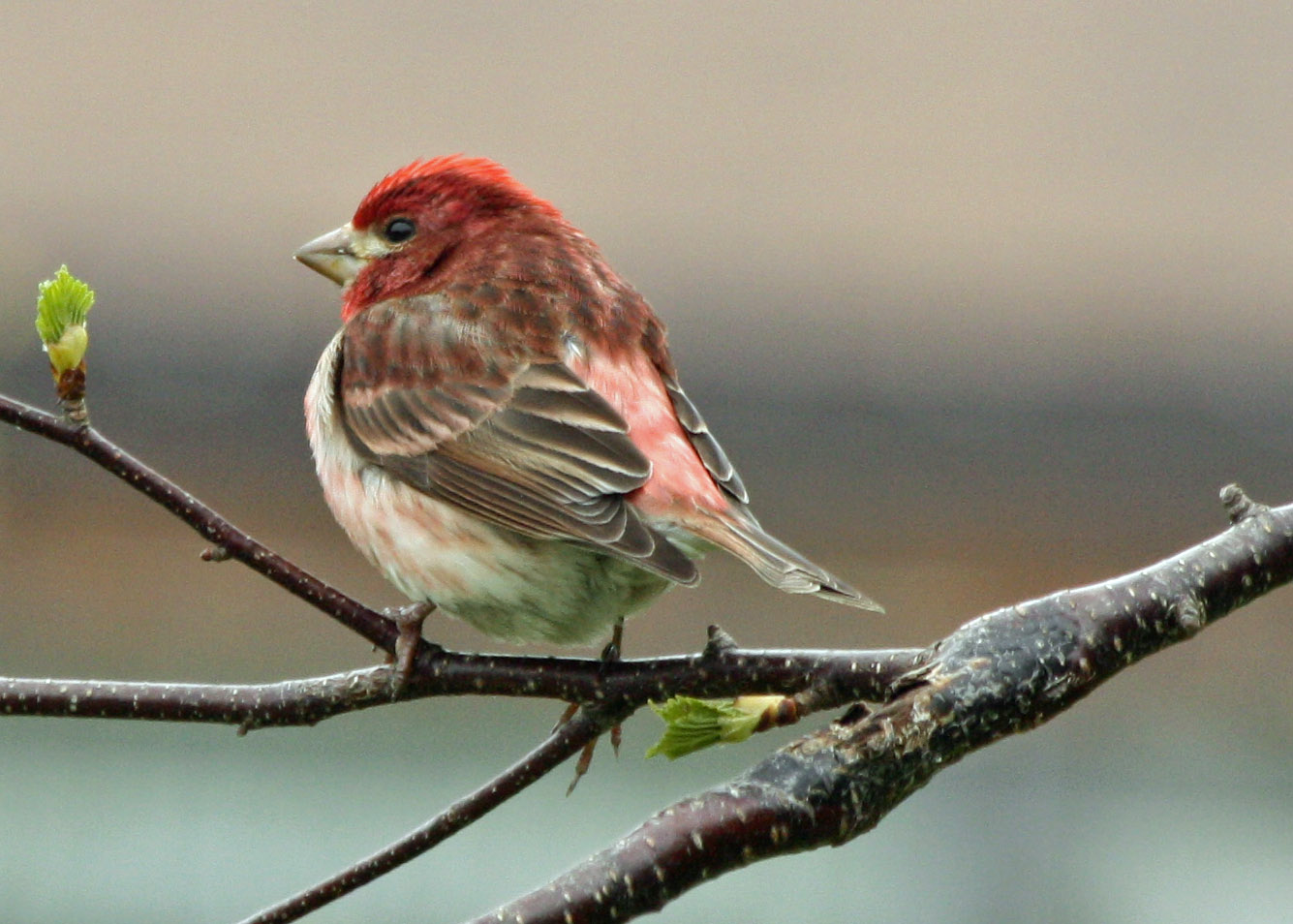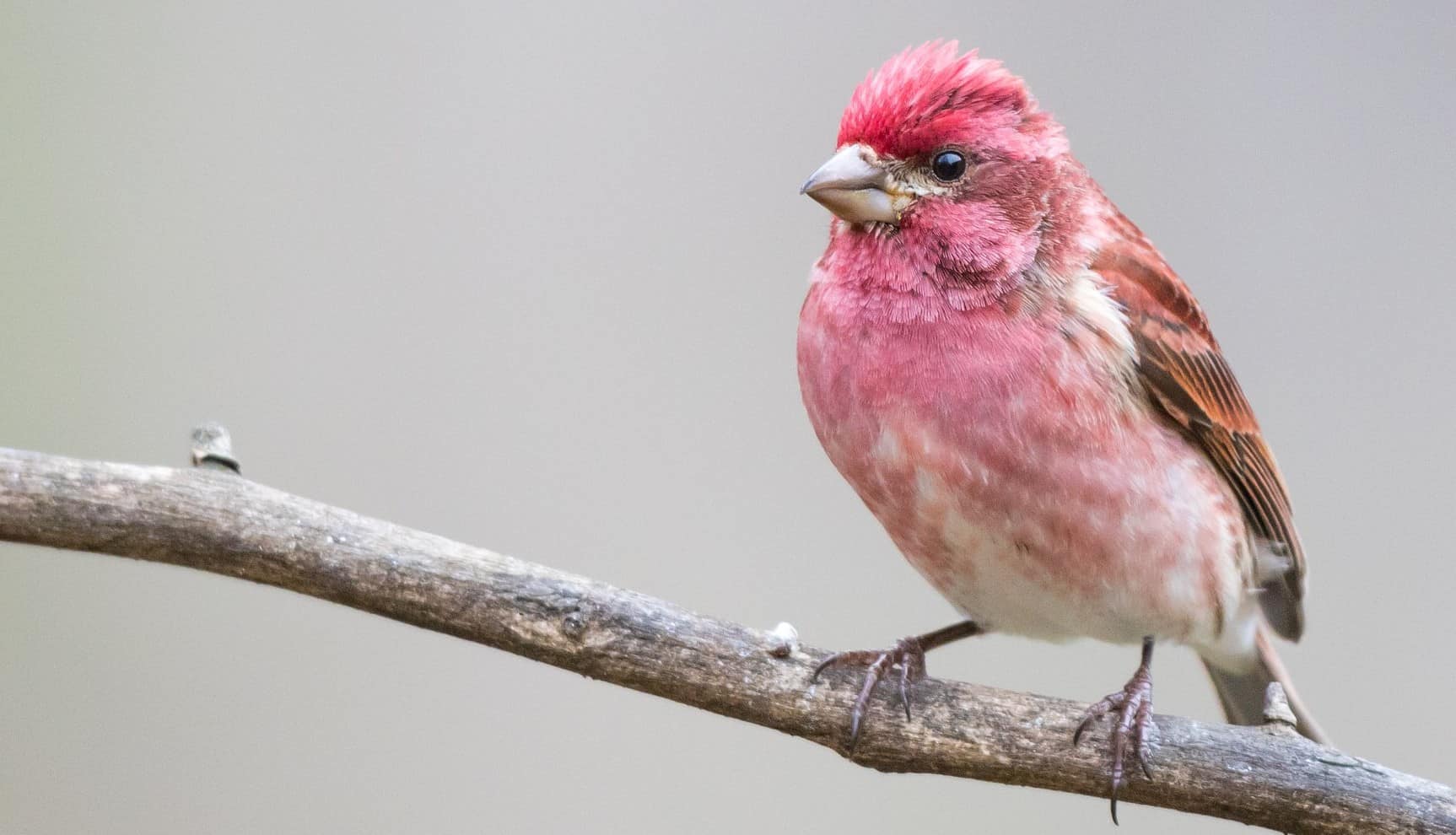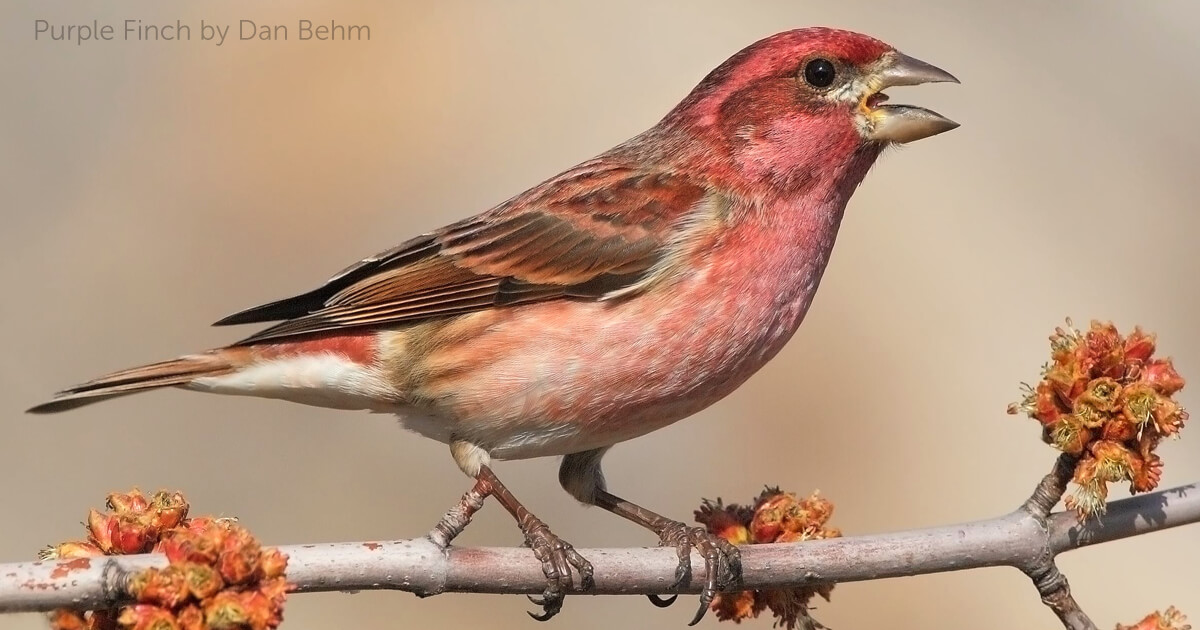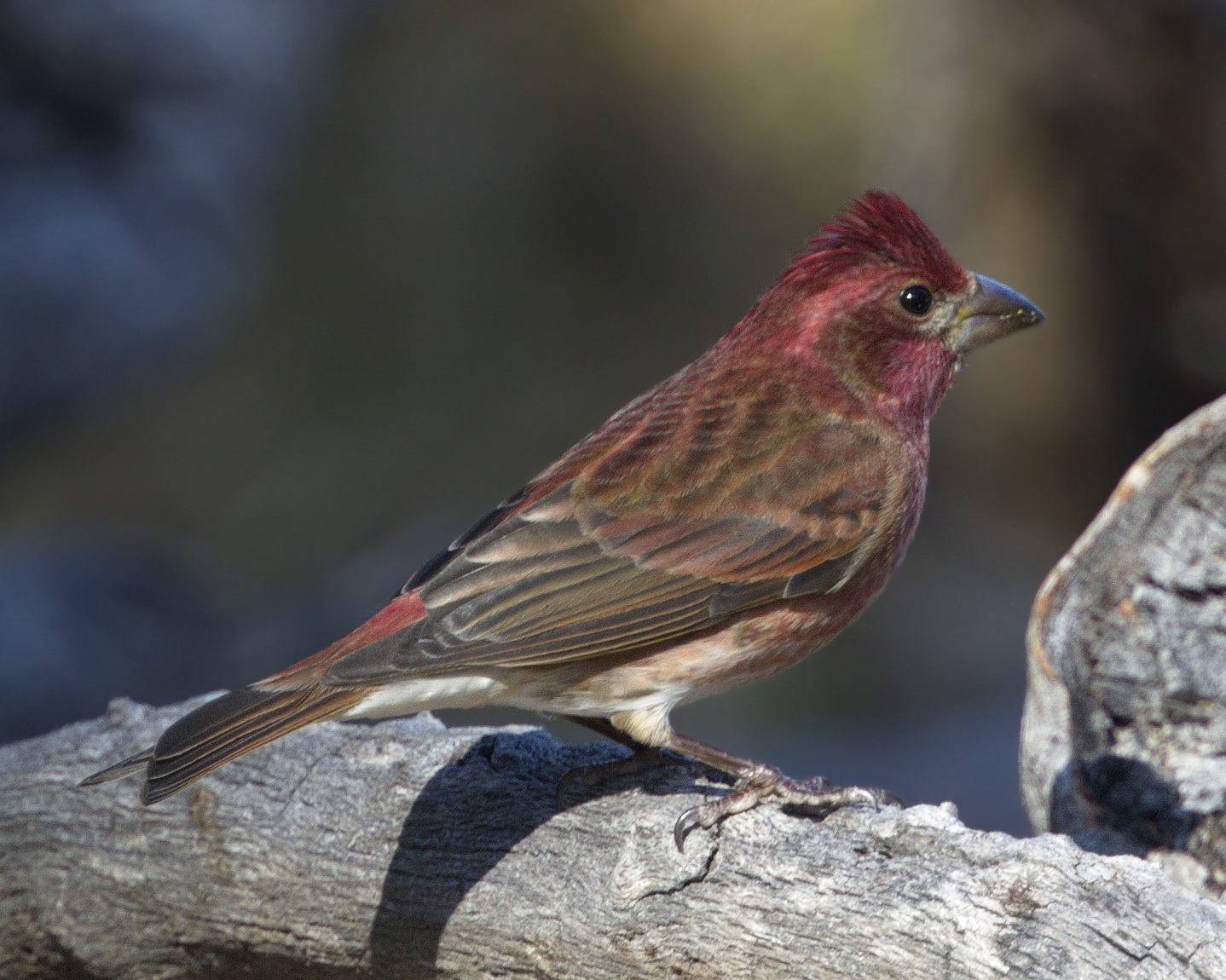Blog
Revealing 5 strange things about Purple Finch that you don’t know
Revealing 5 strange things about Purple Finch that you don’t know is a fascinating journey into the world of these vibrant little birds. Known for their rich crimson plumage and sweet melodies, Purple Finches bring beauty to North American backyards. However, there’s much more beneath the surface of their charming appearance. In this article, we will unravel five enchanting quirks about Purple Finches that might leave you captivated and eager to learn more about these clever creatures.
The Color Paradox: Purple or Not?
At first glance, one might assume the name “Purple Finch” indicates a rich purple hue. However, as we explore deeper, it becomes evident that the nomenclature is a bit misleading. Male Purple Finches are adorned with stunning rosy-red feathers, primarily on their heads, breasts, and rumps. This warm coloration can vary in intensity based on factors such as diet and lighting conditions.
The Origins of Their Name
The origins of the name “Purple Finch” can be traced back to early naturalists who struggled with accurately categorizing colors. It seems they may have perceived hues of reddish-purple under certain lighting conditions or influenced by other species’ colors. Over time, the term stuck, despite the fact that modern bird enthusiasts often find this designation misleading.
Color perception is inherently subjective; varying cultural contexts and individual experiences shape our understanding of color. For instance, while a male Purple Finch may appear intensely red to one observer, another might notice subtle purples depending on shadows and backgrounds. This highlights the importance of language and context in our classification systems, especially within the realm of nature.
Females: The Stealthy Camouflage Artists
In contrast, female Purple Finches present a far more subdued appearance, sporting brown and streaky patterns. This muted coloration serves an essential purpose, allowing them to blend seamlessly into their surroundings—particularly during nesting seasons. Concealment is critical for their survival, ensuring that predators have a harder time spotting them and their young.
The stark difference between males and females not only exemplifies the beauty of sexual dimorphism but also reflects essential survival strategies in avian life. Female Purple Finches are masters of camouflage, proving that understated elegance plays a crucial role in their reproductive success.
A Nomadic Spirit: The Wandering Finch
While many finch species are known to remain in specific locales throughout the year, the Purple Finch exhibits a unique nomadic quality. This migratory behavior contrasts with common perceptions of finch habits, revealing surprising insights into their ecology.
Seasonal Movements and Food Availability
A closer look at the nomadic tendencies of the Purple Finch uncovers their response to environmental fluctuations. During periods of food scarcity, particularly in harsh winter months, these birds embark on extensive journeys in search of sustenance. Banding studies and radio telemetry have helped scientists trace their migration routes, showcasing their remarkable adaptability in times of need.
This ability to travel vast distances allows Purple Finches to interact with different populations and contributes to genetic diversity among the species. Observations of these movements also highlight their importance in maintaining regional biodiversity, as their presence alters local ecosystems and dynamics among various bird populations.
Implications for Bird Populations and Ecosystems
The nomadic nature of Purple Finches extends beyond mere survival; it impacts the entire avian community and the ecosystem as a whole. As they migrate, they engage in seed dispersal, influencing plant growth and regeneration. Furthermore, their presence in a specific area can shift dramatically throughout the year, affecting the composition of local bird communities which share similar habitats.
These dynamic interactions illustrate the interconnectedness of species within ecosystems, emphasizing the necessity for conservation efforts that accommodate the mobility of migratory birds like the Purple Finch. Understanding their nomadic behavior invites us to consider broader ecological implications and the importance of preserving natural habitats for the sake of avian diversity.
A Symphony of Vocalization: The Complex Song of the Purple Finch
The melodious song of the Purple Finch is undoubtedly one of its most captivating features. From sweet trills to warbling notes, their vocalizations create an enchanting ambiance in any garden. Yet, there’s so much more to discover when it comes to understanding the nuances of their songs.
The Unique Structure of Their Songs
One intriguing aspect of Purple Finch vocalization is the extraordinary variation in their song structures. While all Purple Finches share a general tune, individual birds exhibit significant differences in components and sequences. These variations reflect regional dialects shaped by exposure to other Purple Finches within particular geographic areas.
Just as human languages evolve regional accents, so too do the songs of Purple Finches. Young birds learn their songs from adult males in their communities, perpetuating local styles and contributing to a diverse musical tapestry across the species’ range. This intricate process of vocal learning fosters a sense of identity and belonging within each population.
Communication Beyond Mating Calls
Beyond the romantic serenades and territorial announcements, Purple Finches employ their songs for various social interactions. Singing serves as a powerful tool for communication, aiding in mate attraction, territory establishment, and reinforcing social hierarchies within flocks.
Interestingly, Purple Finches don’t limit their performances to dawn choruses; they sing throughout the day, adding a layer of complexity to their vocal repertoire. This continuous engagement with their environment demonstrates their social intelligence and adaptability, making them more than just passive observers in their habitats.
An Eclectic Diet: Beyond Seeds and Nuts
Commonly associated with seed consumption, Purple Finches boast a surprisingly diverse diet that transcends simple classifications. Understanding their nutritional habits unveils a hidden layer of their ecological significance and adaptability.
Insects: A Hidden Protein Source
When discussing the diet of Purple Finches, one might be surprised to learn that they actively incorporate insects and invertebrates into their meals. While seeds from coniferous trees form the bulk of their diet, these birds eagerly consume caterpillars, beetles, and spiders, particularly during the breeding season when protein-rich food sources are essential for chick development.
This insectivorous behavior plays a vital role in maintaining ecological balance, as Purple Finches contribute to natural pest control. By consuming small invertebrates, they help regulate populations of potentially harmful species within their habitats.
Versatile Foraging Techniques
Adaptability defines the foraging strategies of Purple Finches. They utilize various techniques to procure food, from gleaning insects off foliage to pecking at crevices in tree bark. This versatility allows them to thrive in diverse habitats, ranging from dense forests to urban parks.
Their knack for exploration underscores the importance of habitat conservation, as maintaining healthy ecosystems ensures access to the varied resources necessary for their survival. When we recognize Purple Finches as more than simple seed-eaters, we uncover their role as versatile foragers contributing to the overall health of their environments.
The House Finch Connection: A Tale of Two Species
The resemblance between Purple Finches and House Finches often leads to confusion among birdwatchers and casual observers alike. While they share similarities in size and shape, key differences reveal their distinct identities.
Identifying Features of Both Species
The most apparent distinction lies in the coloration of their plumage. Male Purple Finches exhibit rich rosy-red feathers, while House Finches showcase a more muted blend of browns and reds. This difference in coloration is just one part of their compelling story, as several behavioral and ecological traits set them apart.
Despite the visual similarities, these two species possess unique adaptations that allow them to coexist within overlapping ranges. The interplay between these closely related birds brings up fascinating questions about competition and resource partitioning in shared habitats.
Hybridization: Nature’s Intriguing Experiment
Adding another layer of complexity to their relationship, hybridization between Purple Finches and House Finches has been documented in regions where their territories overlap. Such interbreeding, although rare, raises exciting possibilities regarding genetic flexibility and adaptation in both species.
Scientists are actively exploring the implications of hybridization on the genetic integrity of these birds. Will the merging of their gene pools lead to new characteristics or potential vulnerabilities? The dynamic nature of evolution beckons us to ponder the outcomes of such interactions and how they shape the long-term future of avian species.
As we’ve uncovered through the lens of revealing 5 strange things about Purple Finch that you don’t know, these charming little birds are far more complex than their beautiful appearances suggest. From their deceptive names and colorful plumage to their nomadic behavior, unique vocalizations, eclectic diet, and intriguing connections with fellow finches, the Purple Finch showcases the richness of nature’s design.
Each quirk and characteristic adds depth to our understanding of avian life and the intricate relationships that define ecosystems. So, the next time you spot a Purple Finch in your backyard, take a moment to appreciate the hidden secrets that make this common bird an extraordinary marvel of nature.
>>> Read more: The Fascinating History of Dragon Tattoos Across Cultures




